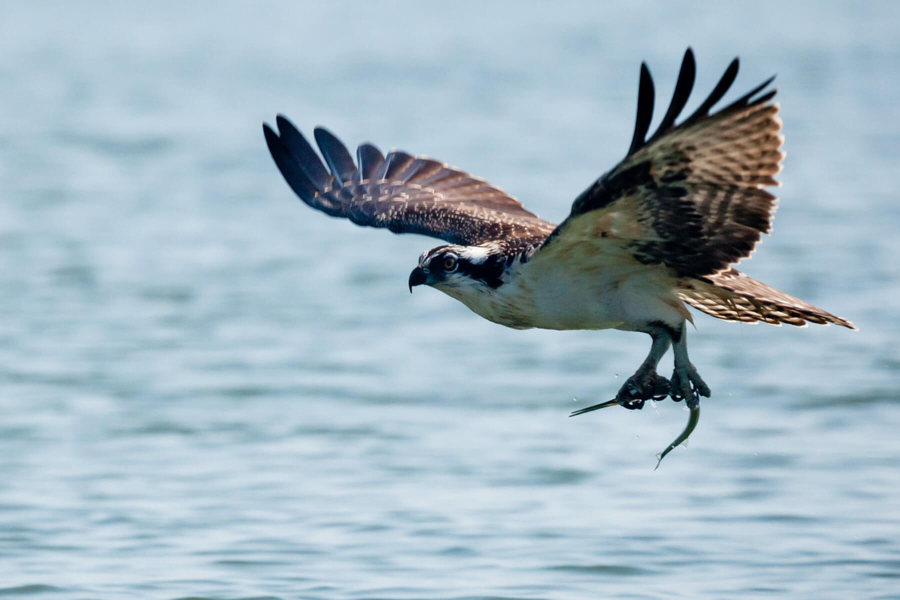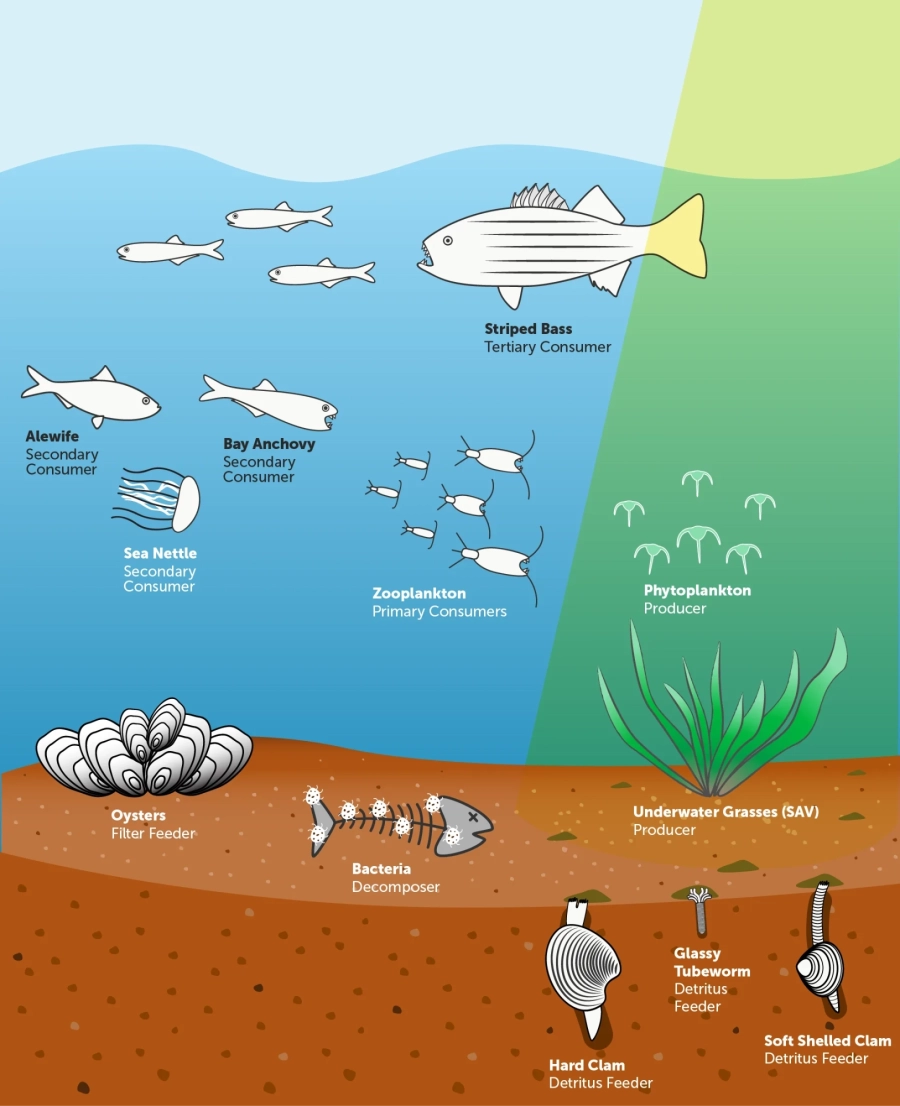Food Web
Explore how complex connections between predators and prey help form a healthy, balanced food web.

All of the interconnected and overlapping predator-prey relationships in an ecosystem—including producers, consumers and decomposers—make up a food web.
What is a food web?
As one organism eats another, a food chain is formed. Each step along a food chain is known as a trophic level or feeding level, and every organism can be categorized by its trophic level.
- The most basic trophic level is producers—plants such as underwater bay grasses and free-floating algae that make their own food through photosynthesis. Producers are the basis of all food and influence the production of all other organisms.
- Consumers are organisms that eat plants, algae, or other animals.
- Decomposers digest the bodies of dead plants and animals. They appear throughout the food web, breaking organic matter back down into nutrients for producers to use once again.
A food web is made up of all of the interconnected food chains in an ecosystem.
An example of a food chain
Through a food chain, organic compounds originally produced by a plant pass through successively higher trophic levels:
- The food chain starts with phytoplankton converting sunlight and nutrients into living tissue.
- Phytoplankton is then eaten by copepods, which are members of the microscopic animal community called zooplankton.
- Copepods are eaten by bay anchovies, which are eaten by large fish such as bluefish and striped bass.
- These large fish can then be harvested and eaten by humans.

Show image description
The infographic shows a cross-section of an underwater habitat, from above the water's surface to below its muddy bottom. The infographic features drawings of different plants and animals, with text labels that indicate the role the plant or animal plays within this habitat's food web. In an underwater area where sunlight is shining, phytoplankton (floating in the water) and underwater grasses (growing out of the sediment) are labeled as producers. Swimming elsewhere, zooplankton are labeled as primary consumers; an alewife, bay anchovy, and sea nettle are labeled as secondary consumers; and a striped bass is labeled as a tertiary consumer. On the habitat's bottom, oysters are labeled as filter feeders and bacteria are labeled as decomposers. Buried in the mud, a hard clam, soft shell clam and glassy tubeworm are labeled as detritus feeders.
Food production and consumption in the Bay are rarely as simple or direct as this example. Seldom does one organism feed exclusively on another.
How are food webs important?
Each organism within a food web is connected to and depends on others for food. Filter feeders such as oysters, clams and menhaden must have enough plankton available to sustain themselves. Striped bass and bluefish, part of a higher trophic level, rely on menhaden and bay anchovies as their primary food source.
A healthy ecosystem is one with a balanced food web—not too much production or consumption of any one of the producers or consumers. An ecosystem must be enormously productive to support substantial populations of species at the highest trophic levels; for example, every pound of commercial fish taken from the Bay requires almost 8,000 pounds of underlying producers and consumers. However, an overabundance of algae can be harmful, reducing oxygen in the water and blocking sunlight from reaching underwater grasses.
How do chemical contaminants move through food webs?
Food webs can also be a pathway for harmful chemical contaminants. Mercury and PCBs can pass to higher trophic levels in a process called bioaccumulation.
- Small bottom-dwelling organisms take up contaminants that are in bottom sediments while feeding or through skin contact.
- Larger fish accumulate toxins in their tissues when they eat contaminated smaller organisms.
- Birds, other wildlife, and even humans may eat contaminated fish, allowing the contaminants to continue to move through the food web.
The severe decline of bald eagles and osprey in the 1950s through the 1970s resulted from the bioaccumulation of DDT, a pesticide used to control insects and agricultural pests. DDT caused eagles to lay extremely thin-shelled eggs that would break in the nest.
